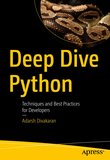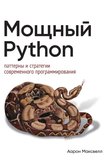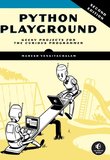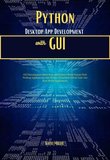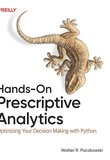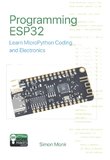-
.NET (.NET Core)
-
1C
-
APL
-
AWK
-
Agda
-
Agile/Scrum
-
Alef
-
Assembler
-
Basic
-
Beta Programming Language
-
Big Data/DataScience
-
C
-
C#
-
C++
-
CSS
-
Cobol
-
Crystal
-
D
-
Dart
-
DataBase (SQL)
-
Delphi
-
F#
-
Flutter
-
Fortran
-
GPT/AI/ИИ
-
GameDev
-
Git
-
Go (Golang)
-
HTML
-
Hacking and Security
-
Haskell
-
Java
-
JavaScript (JS)
-
Julia
-
Kotlin
-
Machine Learning (ML)
-
Natural language processing (NLP)
-
PHP
-
Pascal
-
Python
-
R
-
Ruby
-
Rust
-
Scratch
-
Swift
-
UML
-
UX/UI
-
Visual Basic
-
Wolfram
-
XML
-
АСУ
-
Проектирование/System Design
-
Сети/Network
-
Схемотехника/электронные схемы
-
.NET (.NET Core)
-
1C
-
APL
-
AWK
-
Agda
-
Agile/Scrum
-
Alef
-
Assembler
-
Basic
-
Beta Programming Language
-
Big Data/DataScience
-
C
-
C#
-
C++
-
CSS
-
Cobol
-
Crystal
-
D
-
Dart
-
DataBase (SQL)
-
Delphi
-
F#
-
Flutter
-
Fortran
-
GPT/AI/ИИ
-
GameDev
-
Git
-
Go (Golang)
-
HTML
-
Hacking and Security
-
Haskell
-
Java
-
JavaScript (JS)
-
Julia
-
Kotlin
-
Machine Learning (ML)
-
Natural language processing (NLP)
-
PHP
-
Pascal
-
Python
-
R
-
Ruby
-
Rust
-
Scratch
-
Swift
-
UML
-
UX/UI
-
Visual Basic
-
Wolfram
-
XML
-
АСУ
-
Проектирование/System Design
-
Сети/Network
-
Схемотехника/электронные схемы
Меню
Image Processing in Python: Using the Pillow library

Автор: McBride Martin
Дата выхода: 2021
Издательство: Lean Publishing
Количество страниц: 178
Размер файла: 2,2 МБ
Тип файла: PDF
Добавил: codelibs
Preface
Who is this book for?
About the author
Keep in touch
Introduction
Versions
Example sources on github
I Bitmap images
1 Introduction to bitmap imaging
1.1 What is a bitmap image?
1.2 Spatial sampling
1.3 Colour representation
1.4 File formats
1.5 Vector images
2 Computer colour
2.1 Visible light
2.1.1 Frequency and wavelength
2.2 What is colour?
2.2.1 Non-spectral colours
2.3 How we see colour
2.4 The RGB colour model
2.4.1 Displaying colour
2.4.2 Representing RGB colours as a percentage
2.4.3 Floating point representation
2.4.4 Byte value representation
2.5 Colour resolution
2.6 Greyscale colour model
2.7 The CMYK colour model
2.7.1 The K component
2.8 HSL/HSB colour models
2.9 HSL variants
2.10 Perceptual colour models
2.10.1 CIE spaces
2.11 Colour management
2.11.1 Gamuts
3 Bitmap image data
3.1 Data layout
3.2 8-bit per channel images
3.2.1 24-bit RGB
3.2.2 32-bit CMYK
3.2.3 8-bit greyscale
3.2.4 32-bit RGBA
3.3 Bitmap data with fewer levels
3.3.1 8-bit RGB
3.3.2 16-bit RGB
3.3.3 Dithering
3.4 Bilevel images
3.5 Bitmap data with more levels
3.6 Palette based images
3.6.1 Images with more than 256 colours
3.7 Handling transparency
3.7.1 Alpha channel
3.7.2 Transparent palette entry
3.7.3 Transparent colour
3.8 Interlacing and alternate pixel ordering
4 Image file formats
4.1 Why are there so many formats?
4.2 Image data and metadata
4.3 Image compression
4.3.1 Lossless compression
4.3.2 Lossy compression
4.4 Some common file formats
4.4.1 PNG format
4.4.2 JPEG format
4.4.3 GIF format
4.4.4 BMP format
4.5 Animation
II Pillow library
5 Introduction to Pillow
5.1 Pillow and PIL
5.2 Installing Pillow
5.3 Main features of Pillow
6 Basic imaging
6.1 The Image class
6.2 Creating and displaying an image
6.3 Saving an image
6.4 Handling colours
6.4.1 Converting strings to colours
6.5 Creating images
6.6 Opening an image
6.7 Image processing
6.8 Rotating an image
6.9 Creating a thumbnail
6.10 Image modes
7 Image class
7.1 Example code
7.2 Creating images
7.2.1 Image.new
7.2.2 Image.open
7.2.3 copy
7.2.4 Other methods
7.3 Saving images
7.4 Image generators
7.5 Working with image bands
7.5.1 getbands
7.5.2 split
7.5.3 merge
7.5.4 getchannel
7.5.5 putalpha
8 ImageOps module
8.1 Image resizing functions
8.1.1 expand
8.1.2 crop
8.1.3 scale
8.1.4 pad
8.1.5 fit
8.2 Image transformation functions
8.2.1 flip
8.2.2 mirror
8.2.3 exif-transpose
8.3 Colour effects
8.3.1 grayscale
8.3.2 colorize
8.3.3 invert
8.3.4 posterize
8.3.5 solarize
8.4 Image adjustment
8.4.1 autocontrast
8.4.2 equalize
8.5 Deforming images
8.5.1 How deform works
8.5.2 getmesh
8.5.3 A wave transform
8.5.4 Other deformations
9 Image attributes and statistics
9.1 Attributes
9.1.1 File size
9.1.2 File name
9.1.3 File format
9.1.4 Mode and bands
9.1.5 Palette
9.1.6 Info
9.1.7 Animation
9.1.8 EXIF tags
9.2 Image statistics
9.2.1 Image histogram
9.2.2 Masking
9.2.3 Other Image statistics
9.2.4 ImageStat module
10 Enhancing and filtering images
10.1 ImageEnhance
10.1.1 Brightness
10.1.2 Contrast
10.1.3 Color
10.1.4 Sharpness
10.2 ImageFilter
10.3 Predefined filters
10.4 Parameterised filters
10.4.1 Blurring functions
10.4.2 Unsharp masking
10.4.3 Ranking and averaging filters
10.5 Defining your own filters
11 Image compositing
11.1 Simple blending
11.1.1 Image transparency
11.1.2 ImageChops blend function
11.1.3 ImageChops composite function
11.2 Blend modes
11.2.1 Addition
11.2.2 Subtraction
11.2.3 Lighter and darker
11.2.4 Multiply and screen
11.2.5 Other blend modes
11.3 Logical combinations
12 Drawing on images
12.1 Coordinate system
12.2 Drawing shapes
12.2.1 Drawing rectangles
12.2.2 Drawing other shapes
12.2.3 Points
12.3 Handling text
12.3.1 Drawing simple text
12.3.2 Font and text metrics
12.3.3 Anchoring
12.3.4 Drawing multiline text
12.4 Paths
12.4.1 Drawing a path
12.4.2 Transforming paths
12.4.3 Mapping points
13 Accessing pixel data
13.1 Processing an image
13.2 Creating an image
13.3 Performance
14 Integrating Pillow with other libraries
14.1 NumPy integration
14.1.1 Converting a Pillow image to Numpy
14.1.2 Image data in a NumPy array
14.1.3 Modifying the NumPy image
14.1.4 Converting a NumPy array to a Pillow image
III Reference
15 Pillow colour representation
15.1 Hexadecimal colour specifiers
15.2 RGB functions
15.3 HSL functions
15.4 HSV functions
15.5 Named colours
15.6 Example
15.7 Image modes
More books from this author
Numpy Recipes
Computer Graphics in Python with Pycairo
Functional Programming in Python
Pillow is the most popular Python image processing library. It provides many of the features found in imaging applications like Photoshop or GIMP, such as loading, saving, resizing, transforming images, as well as converting colours and applying filters, enhancements, and effects. This book will teach you how to use simple Python code to automate these functions using the Pillow library, so that your programs can incorporate advanced image processing. It provides a comprehensive guide to Pillow, in plain language and with lots of examples.
